Earlier posts: 1. Introduction; 2. Sungei Buloh; 3. Kranji Heronry; 4. Khatib Bongsu; 5. Senoko; 6. Marina South; 7. Punggol Grassland; 8. Lower Peirce; 9. Chek Jawa.
Bidadari was opened in 1908 as a burial ground. By 1998 the cemetery was closed and the area designated for high-density public housing. Exhumation was started in 2001 and completed by 2006. In 2012 the Urban Redevelopment Authority (URA) announced plans to develop a public park at the 25 hectares exhumed Muslim Cemetery LINK.
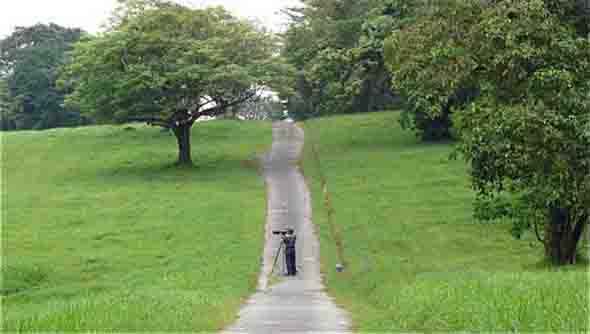
After the graves were exhumed, the area, covered with woodland, scrub, grassland and dotted with mature trees, became a temporary park for joggers and people to walk their dogs. Birdwatchers seldom ventured into the area.
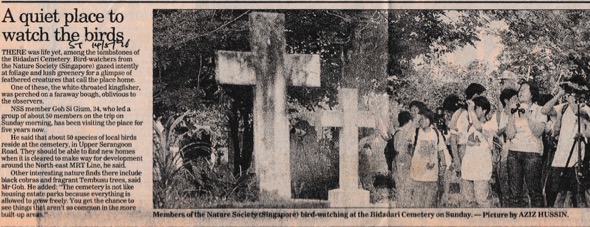
One exception was Goh Si Gium who led groups into the cemetery to watch birds as early as the 1990s (above). The other was photographer-cum-birdwatcher KC Tsang who made the area his favourite birding spot since early 2009 LINK. His many sightings of migratory birds – see HERE and HERE helped popularised the area and birdwatchers began to follow in his footsteps.
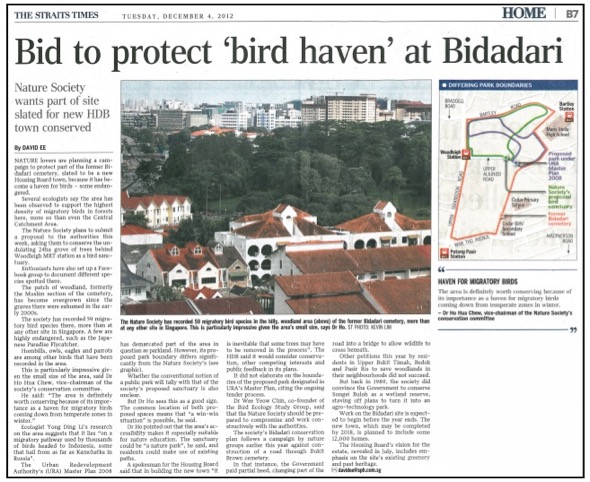
Since then a total of 141 species of birds had been recorded, 38% of the total for Singapore. Of these 59 were migratory birds or 40% of the total coming to Singapore. Two of the migrants, Japanese Paradise-flycatcher (Terpsiphone paradisi) and Brown-chested Jungle-flycatcher (Rhinomyias brunneata) were “near threatened” and “vulnerable” as listed in the IUCN Red List respectively. Also, 10 resident bird species are listed in Singapore’s Red Data Book (2008) as either “Vulnerable”, “Endangered” or “Critically Endangered”.
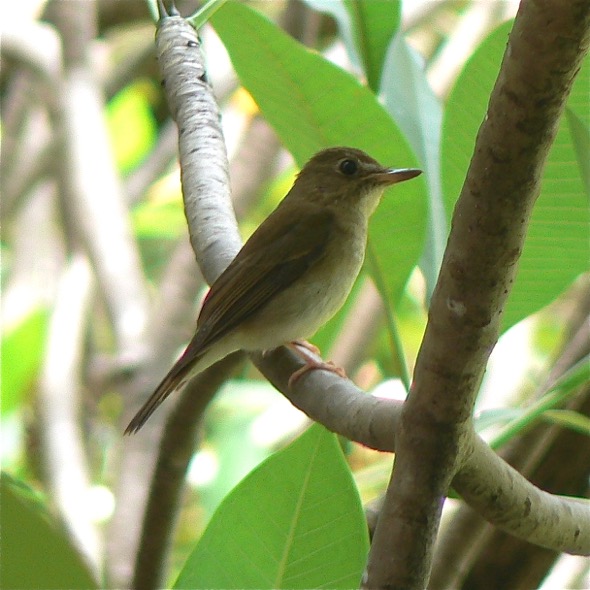
The Nature Society (Singapore)’s conservation plan for Bidadari as a nature park surfaced on 7th December 2012 HERE. The report was sent to the Housing and Development Board with copies to the National Parks Board and URA.
The Conservation Committee of the society was unhappy that most of the area would be used for high-rise housing, leaving a small area as a park. The woodland that had become a sanctuary for migratory birds would thus be destroyed.
Now why were there so many birds in Bididari? Since its use as a burial ground, the area was visited infrequently. As the trees mature and vegetation developed, birds, residents as well as migrants, found the place an ideal feeding and roosting ground. Yes, Bidadari became a refuge for many migrant birds. But this was not the only location that migrating birds found refuge.
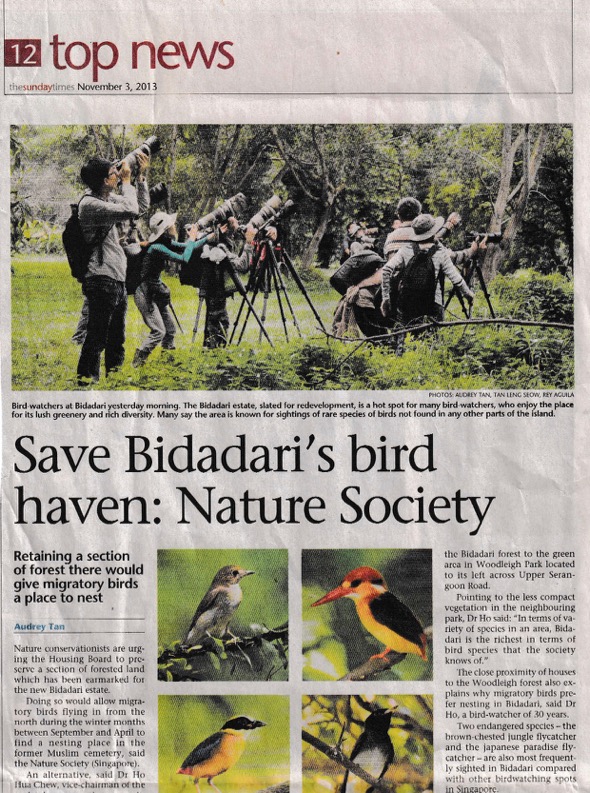
There are many spots where migrants also stop to refuel after their long flight, see LINK. One main reason why birdwatchers want Bidadari left alone was its easy accessibility. There was a major road running through and plenty of small groves of old trees that made watching birds a breeze.
Although the birdlife may be interesting and to a certain extent unique, there was nothing unusual about the plants.
Currently Bididari has been developed – the highrise apartment buildings and the proposed park, the latter obviously not to the Conservation Committee’s satisfaction.
To demand each and every relatively untouched wild areas with plentiful birds be set aside for nature areas is rather unreasonable. Are we not satisfied with Bukit Timah Nature Reserve, Central Catchment Nature Reserve, Labrador and Sungei Buloh Wetland Reserve? Also, the many existing nature parks? The complaints from nature activists about parks and gardens have always been that they are manicured! But then isn’t Bidadari also MANICURED?
We need to stop demanding for irrelevant pieces of areas and target our attention at what we already have. Part of our old MacRitchie forest is threatened by the proposed rail line cutting through instead of going around the forest LINK. Do we see the Conservation Committee at the forefront? They are nowhere to be seen – just like when the forest at Lower Peirce was threatened 2.5 decades ago
YC Wee
Singapore
2nd April 2017
Reference:
Davison, G. W. H., P. K. L. Ng & H. C. Ho (eds.), 2008. The Singapore Red Data Book: Threatened Plants and Animals of Singapore. 2nd Edition. Nature Society (Singapore), Singapore. 285pp.
Secretary, Malayan Nature Society (Singapore Branch) 1978-1990; Founding President, Nature Society (Singapore) 1990-1995








